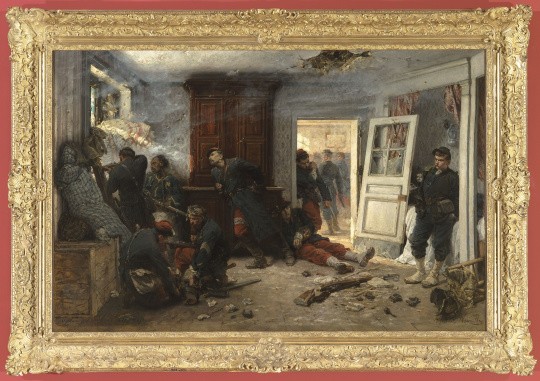This painting by Alphonse de Neuville (He was born ‘Deneuville’ and changed his name to ‘de Neuville’ later on)(1835-1885) was revealed to the public in 1873 and became famous overnight. Originally from Saint-Omer, Neuville was a pupil at the École des Mousses de Lorient for a brief spell in his youth before going on to study law. He then spent a short time as a student of the neoclassical painter François-Edouard Picot (who had himself been a student of Jacques-Louis David). From the beginning of his career Neuville showed a passion for paintings with a military theme.
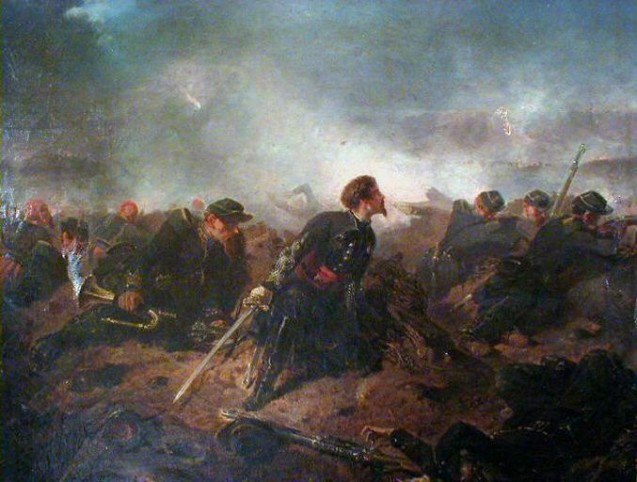
© Musée de l’Hôtel Sandelin – Saint-Omer – M0650
He presented two paintings to the 1859 Salon, both portrayals of the Siege of Sebastopol: Assaut du 15 Juin 1855, quatre heures du matin [Assault of 15 June 1855, four o’clock in the morning], and Assaut du 18 Juillet [Assault of 18 July]. These paintings were acclaimed by the Salon and, along with his monumental painting Bataille de Magenta [The Battle of Magenta], marked a turning point in his career. Today they are part of the collection at the Musées de Saint-Omer.
Neuville’s interest in military history continued throughout the 1860s, during which time he produced numerous sketches and paintings portraying scenes from conflicts such as the Italian War, the Battle of San Lorenzo in Mexico, and the Battle of the Chernaya (his 1868 painting Chasseurs à la Tchernaïa [Infantrymen at the Chernaya] is part of the collection at the Musée des Beaux-Arts de Lille).
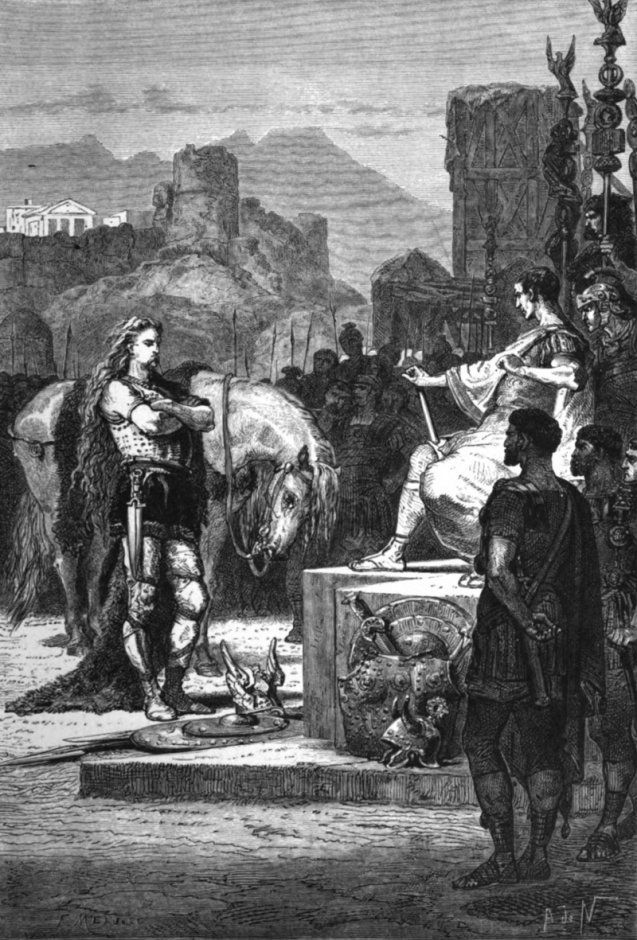
But at the time, he was known most of all for his work as an illustrator, notably for his contribution to Vingt Mille Lieues Sous les Mers [Twenty Thousand Leagues Under the Sea] by Jules Verne, published in 1870. He also provided illustrations for L’Histoire de France: Depuis les temps les plus reculés jusqu’en 1789, racontée à mes petits-enfants [The History of France from the Earliest Times to the Year 1789, told to my Grandchildren] by François Guizot, published between 1870 and 1876 (see the adjacent picture).
The Franco-Prussian War of 1870 marked a major milestone in both his personal life and his career: he served in the National Guard at Belleville and Le Bourget. His vivid memories of fighting the Prussians and their allies inspired a series of canvasses painted after the end of the war, in 1871.
Les Dernières Cartouches [The Last Cartridges] is one of the best known along with the painting of the Saint-Privat Cemetery.
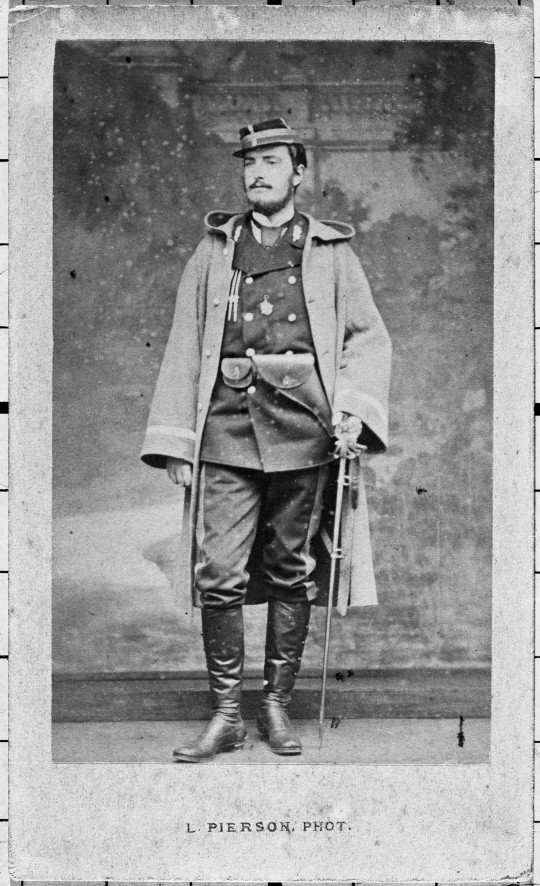
The scene painted by Neuville in The Last Cartridges conjures the profound sadness of the glorious but tragic events that took place during the fighting at the village of Bazeilles, just before the Battle of Sedan and the surrender of Napoleon III. The marines (both infantrymen and artillerymen) of the Division Bleue(A French military division during the Franco Prussian War) protected the retreat of General de Failly’s 5th Army Corps. They repelled two assaults by Bavarian soliders (who were allied with Prussia), and barricaded themselves in the last building in Bazeilles, the L’Auberge Bourgerie [The Bourgerie Inn]. They held on until a soldier, Captain Aubert, fired the last round. After holding on heroically for three hours, the marines were forced to surrender. They were helped in the battle by civilians who had also been targeted by the Bavarian soldiers.
Between the afternoon of 30 August and 1 September 1870, 2,655 French marine infantrymen and artillerymen, and almost 5,000 Bavarian soldiers were killed in the fighting at Bazeilles. Around fifteen out of the fifty or so men in the inn survived, and were spared by the Bavarian captain Lossignolo as a mark of respect for their bravery.
In his painting, Neuville succeeds in bringing to life the tension and desperate gestures of the soldiers. He plays on the diffused light of the boarded window, and the grey tones of the dust and gunpowder shed by the rifle shots. He recreates the suffocating atmosphere with his great attention to detail (the rifles, the rubble on the ground, the broken door) and in the stance of the soldiers who are either waiting with anguish, armed with fierce determination at the window, or slumped on the ground exhausted by the fighting.
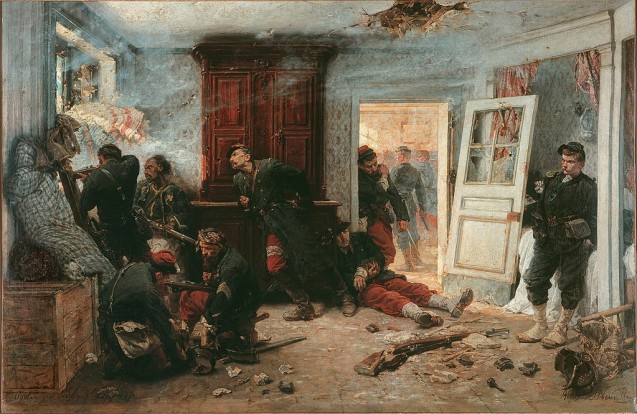
Presented at the Salon of 1873, Neuville’s canvas was met with great success, eloquent proof of the emotion roused by this episode in the War of 1870. Neuville was awarded the Légion d’Honneur [the Legion of Honour: the highest order of civil and military merit] for his work. The work’s popularity cannot be denied: when it was sold at the end of the 19th century, after Neuville’s death, it was the most expensive painting in the world. Neuville remained a key artistic figure until the eve of the First World War and was the embodiment of military painting; his works in other genres never saw the same level of success.
Today the Louvre Museum in Paris has a large collection of Neuville’s notebooks. He is remembered not for being a master of technique, but rather for the way in which he used his paintbrush to bring to life the horrors of the War of 1870, as it was seen by his contemporaries.
►Click here to see Neuville’s sketch of a Turkish man leaning against a wall, part of the collection at the Louvre Museum.
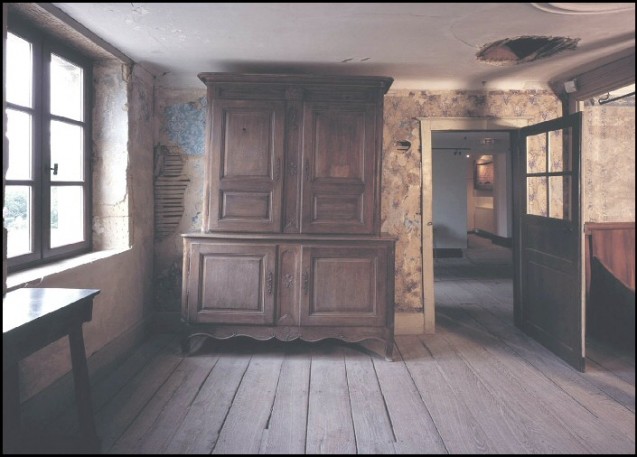
At the end of the war, the inn at Bazeilles was transformed into a place of commemoration, and a small museum was built by its owner. An ossuary was constructed between 1876 and 1878 and erected nearby. In 1899, the site was bought thanks to an appeal launched by the journal Le Gaulois (merged with Le Figaro in 1929), and placed under the patronage of the Souvenir Français(An organisation created in 1887 that aims to preserve war memorials) ten years later. The museum was renovated in 2005, and now features a permanent exhibition of military artefacts from the War of 1870, as well as Neuville’s famous painting. Every year in the first or second week of September, Bazeilles commemorates the fighting of 1870 with a concert performed by the Musique Principale des Troupes de Marine (the military band attached to the French Marines), and a wake at the ossuary. The next day, a mass is held at the village church, followed by a short reenactment of the fighting in front of the Maison de la Dernière Cartouche [the House of the Last Cartridge].
Marie de Bruchard, March 2020 (translation JR)


